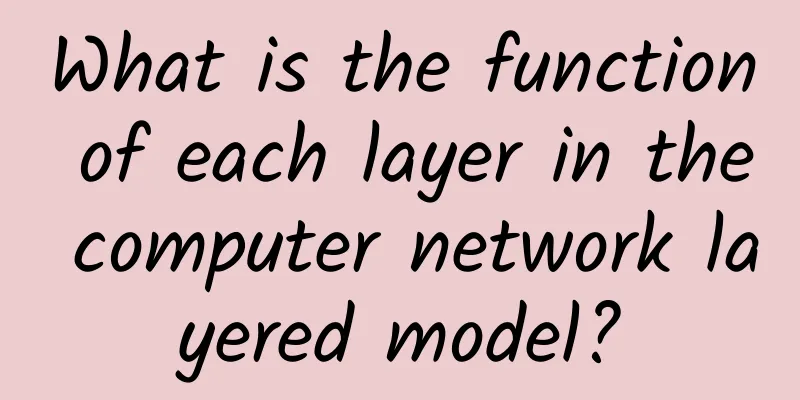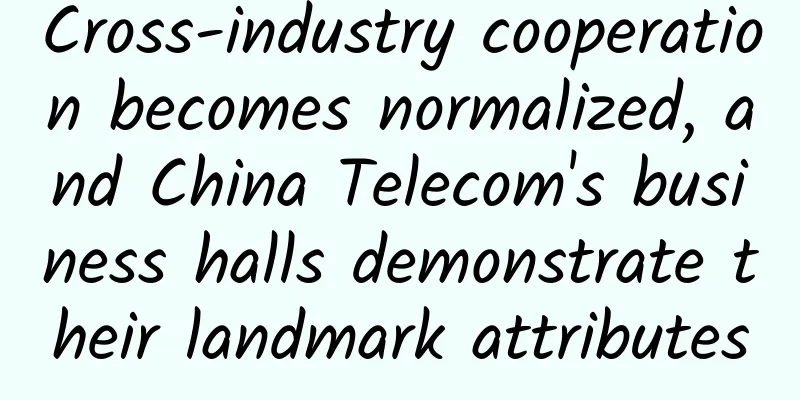What is the function of each layer in the computer network layered model?

|
1. Layering of computer networks In the computer network system, the layered idea is adopted to divide the necessary functions in the communication protocol into layers. Each layer receives specific services provided by the layer below it and is responsible for providing specific services to the layer above it. The agreement followed by the interaction between the upper and lower layers is called "interface", and the agreement followed by the interaction between the same layers is called "protocol".
Why do computer networks use a layered model? The main reasons are that layering has the following advantages:
Of course, the more layers, the better. Layering may also have some disadvantages. For example, it may be over-modularized, making the processing heavier, and different modules may have to handle similar logic, resulting in redundancy and other problems. 2. Common reference modelsIn the early days of computer communication, each computer manufacturer produced its own network products to achieve computer communication. However, due to the lack of standardization, the various protocols set by different manufacturers were incompatible, and cross-manufacturer communication was impossible, which was very inconvenient. In order to solve the above problems, the International Organization for Standardization (ISO) has developed an international standard OSI reference model, which divides the computer network system into 7 layers and standardizes the communication system. This model has clear concepts, but is very complex and difficult to implement, and has not been popularized. For practical purposes, ARPA proposed the TCP/IP reference model (which actually appeared earlier than the OSI model), dividing the computer network into four layers. This model prioritizes the technology that can truly achieve communication during the standard-setting process (it focuses more on how to achieve it rather than on theory), and once any problems are found, the program, protocol or corresponding documents are modified in a timely manner. The model is more concise and more practical, and eventually becomes the industry standard. However, the concept of the network interface layer at the bottom of TCP/IP is not clear and there is no specific content. In order to facilitate the understanding of computer network principles, computer network tutorials usually divide computer networks into 5 layers by combining the advantages and disadvantages of the OSI 7-layer model and the TCP/IP 4-layer model. This is both concise and can explain the concepts more clearly (of course, the TCP/IP model is still actually used). Schematic diagrams of several computer network reference models are as follows: 3.5 Layer Reference Model Introduction
When two computers are communicating, data will pass through different layers of the computer network. When the sender transmits data between layers, each layer will add a header information (encapsulation) belonging to that layer. For example, the transport layer will add information such as the source port number and destination port number, the network layer will add information such as the source IP address and destination IP address, and the data link layer will add the source MAC address and destination MAC address. Conversely, when the receiver transmits data between layers, each layer will remove the corresponding header (decapsulation) when passing through. This is similar to sending express delivery. When merchants send parcels, they will add packaging boxes, packaging bags, shipping information stickers, etc., layer by layer of packaging. When consumers receive the parcels, they need to remove the packaging layer by layer to get the final product. References:
I am Yifeng, a non-professional programmer. I received offers from ByteDance, Meituan, Ctrip, etc. during the Internet winter. In the process of preparing for campus recruitment, I compiled a "Backend Campus Recruitment Interview Guide", which includes Java basics, concurrency, JVM, MySQL, Redis, MQ, Spring, computer networks, operating systems, etc. It is very comprehensive! |
<<: Can this be considered? TCP is awesome.
>>: How cloud services enable a 5G-driven future
Recommend
UDP protocol - just read this article
Every programmer should know TCP and UDP protocol...
HTTP connection management diagram
[[414965]] Hey guys, this is programmer cxuan, we...
Kingsoft Cloud wins "IPv6 Support Excellence Award"; all cloud products have IPv4/IPv6 access capabilities
Recently, the "GNTC 2020 Global Network Tech...
When infrastructure fails, how does Agora SD-RTN ensure high availability of RTE services?
The emergence of cloud computing has brought grea...
What is the relationship between API, ESB, ServiceMesh, and microservices?
Introduction I mentioned before that I would like...
How does TCP perform flow control?
We all know that TCP is a reliable, connection-or...
5G is here, and these threats are lurking...
5G is coming, and it will be possible to experien...
edgeNAT: 48 yuan/month KVM-2GB/20G SSD/2M unlimited/Korea & Hong Kong
edgeNAT is a Chinese VPS hosting company establis...
Unveiling the network architecture of the 6G era! Six major design concepts, three bodies, four layers, and five aspects in one article
The development of network architecture is one of...
How to address network automation risks and tasks
Many network engineers and network administrators...
Huawei Intelligent Computing releases FusionServer Pro intelligent server to help data centers evolve towards intelligence
[51CTO.com original article] Recently, Huawei'...
The decline in operators' ability to generate revenue will affect the rapid deployment of 5G
The report on the economic operation of the commu...
Who moved my broadband? A record of the discovery and solution process of HTTP hijacking
The hijacking we encounter in daily life is usual...
2021 Bots Automation Threat Report: An In-depth Analysis of Bots Attacks
Recently, as a professional manufacturer in the f...
We cannot allow "free-network tools" to threaten network information security
Recently, the official website of the Ministry of...









